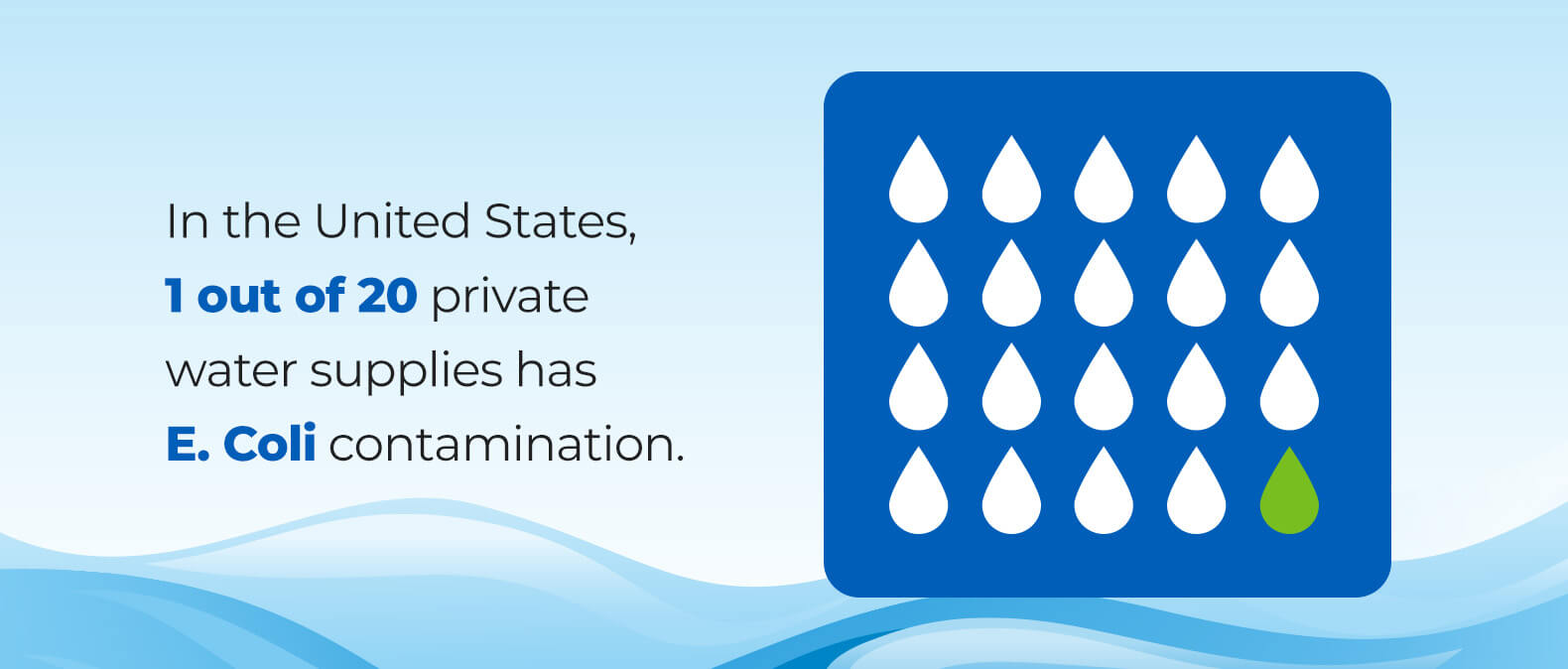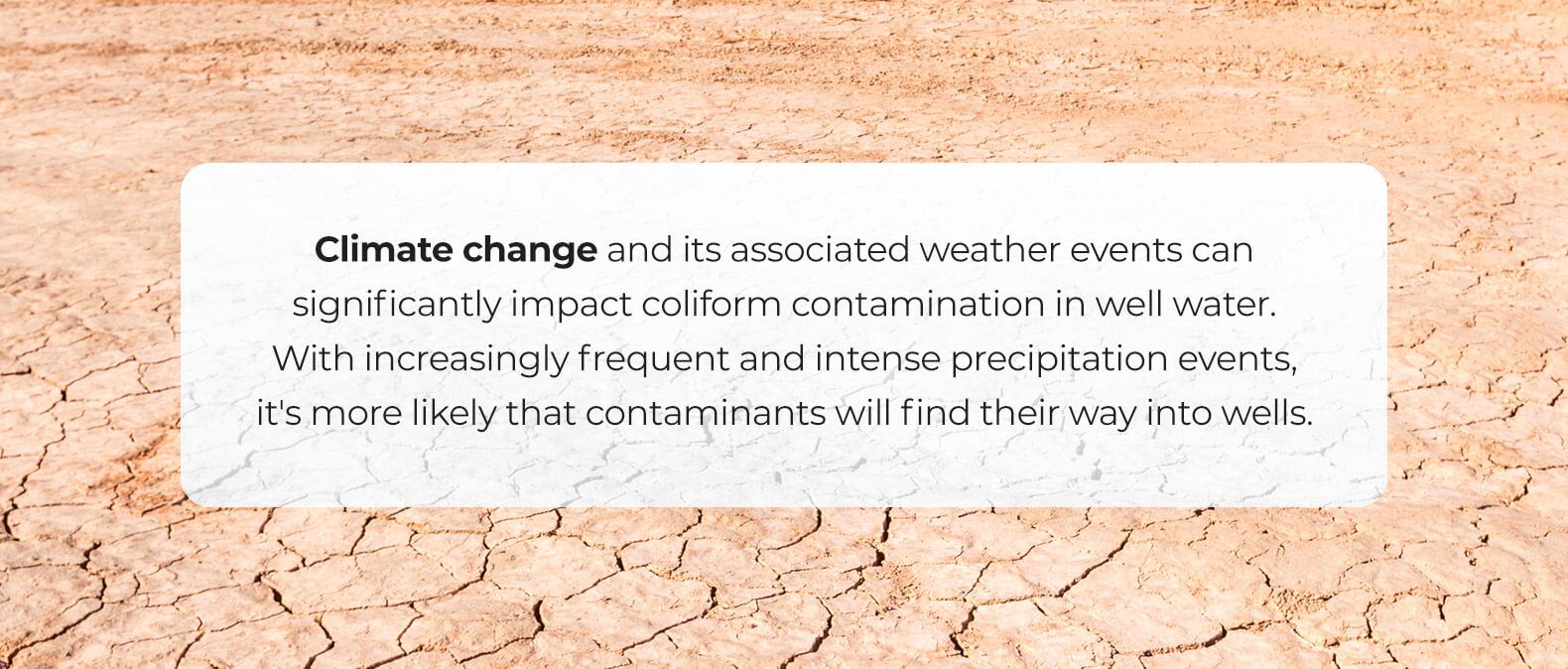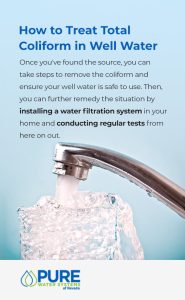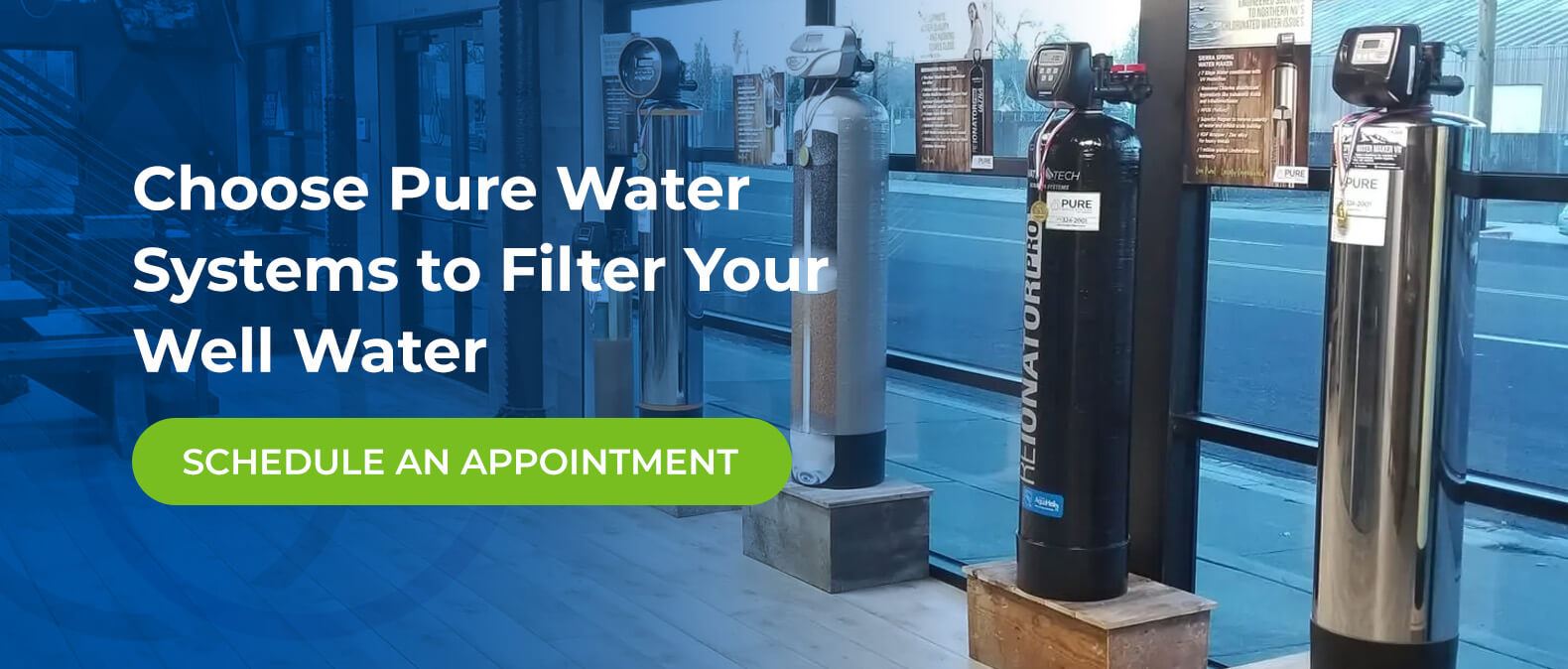Nevada state law does not require private well users to test their water for contaminants or bacteria. The burden is on the end user. At Pure Water Systems of Nevada we have installed thousands of sanitation systems on private wells.
Contaminated wells are often test positive seasonally with heavy rains.
If you rely on well water for drinking, cooking, and cleaning, finding out that your well water has tested positive for coliform can be concerning. There are likely many questions you have, such as whether you can shower in water with coliform, the impacts of coliform on your health, and how you can prevent this from happening in the future.
Fortunately, you can take steps to address the issue and ensure your water is safe to use. Through testing, disinfection, and prevention techniques, you can remove coliform from your water and get back to enjoying healthy water in your home.
Below, learn more about the kinds of coliform found in Nevada, how to know if your well is affected, and what you can do to remedy the problem.
Types of Coliform Found in Northern Nevada

“Coliform” is a term you may have heard before regarding well water testing. In the United States, 1 out of 20 private water supplies has E. Coli contamination.
Northern Nevada is home to a diverse range of wildlife and ecosystems, which can contribute to the presence of coliform bacteria in well water. According to the Nevada Department of Environmental Protection, coliform bacteria is one of the state’s most commonly detected contaminants in private well water.
Here are the kinds of coliform found in Northern Nevada:
- Total coliform: You can find this coliform group in the environment, including in soil, vegetation, and animal waste. While not necessarily harmful, total coliform in well water can indicate the water is contaminated with other harmful bacteria or viruses.
- Fecal coliform: This is a sub-group of total coliform. The bacteria can be found specifically in animal and human feces and is therefore highly present near septic tanks or livestock areas. Fecal coliform isn’t as commonly found as total coliform and shouldn’t be ignored if you find it in your well.
- E. Coli: You can find E. Coli in the intestines of humans and animals. Out of all the coliform types, E.Coli is the most harmful to humans. The bacteria is usually associated with foodborne illness. If E. Coli is detected in your water, stop all use and start the process of addressing the source and decontaminating the area.
Where Does Coliform Bacteria Originate?
Coliform bacteria occur naturally in the environment and in the digestive systems of animals, including humans. You can find high concentration levels of coliform in the following areas:
- Animal waste: Coliform bacteria can enter well water from nearby animal waste, such as livestock or wildlife.
- Human sewage: Leaking or failing septic systems can contaminate well water with coliform bacteria.
- Surface water: Well water can become contaminated with coliform bacteria if the well is near surface water sources, such as rivers, lakes, or ponds that seasonally flood.
- Soil: Coliform bacteria can be present in the soil surrounding a well. Heavy rainfall or flooding can cause bacteria to enter the well water.
- Dead rodents: Often burrow into the well and drown in the water causing decay.
Like any region, the presence of coliform bacteria in well water in Northern Nevada can vary depending on factors such as location, geology, well construction, and potential sources of contamination. Places with higher agricultural or livestock activity may have increased levels of coliform bacteria due to runoff or improper waste disposal practices. Additionally, areas with a higher concentration of septic systems may be at a greater risk.
The Impacts of Climate Change on Your Well

Climate change and its associated weather events can significantly impact coliform contamination in well water. With increasingly frequent and intense precipitation events, it’s more likely that contaminants will find their way into wells.
Northern Nevada experiences the effects of climate change in numerous ways. These occurrences significantly impact the region’s water resources, including groundwater supplies often used for drinking water. As the region experiences longer and more intense droughts, the water levels in wells can drop, making it easier for contaminants to enter the water supply.
All of this makes it crucial for homeowners to be vigilant about testing their well water regularly, especially during drought or heavy precipitation. It’s best to work with a local water company that’s familiar with the area’s unique conditions, as it’ll have a deeper understanding of the issue:
- The company can perform accurate and reliable testing.
- The company will better understand the specific contaminants prevalent in the region.
- The company can provide tailored solutions for well water treatment.
- The company will have the tools and a quicker response time to handle emergencies, such as unexpected contamination events.
What Are the Risks of Coliform Bacteria?
It’s important to note that not all coliform bacteria are harmful to humans. However, the presence of this bacteria in well water can indicate potential contamination with other harmful bacteria or viruses — in particular, the presence of E. coli.
When humans consume water contaminated with E. coli or other harmful bacteria, it can cause a range of symptoms, including:
- Nausea and vomiting
- Diarrhea
- Abdominal cramping
- Fever
- Dehydration
Coliform exposure especially impacts young children, elderly individuals, and those with weakened immune systems. Although the symptoms aren’t severe in most cases, you should seek medical attention immediately if you knowingly consume any contaminated water.
Steps to Know if Well Water Is Contaminated
The only way to know if your well water is healthy is to have it tested by a qualified laboratory. Professionals in the water industry recommend that private well owners test their water at least once a year for coliform bacteria.
You should also have a professional test your well water:
- If you notice any changes in the taste, color, or odor.
- If there has been a flood, earthquake, or natural disaster in your area.
While it can be difficult to know whether your water is contaminated, one tell-tale sign is that you and your family are getting sick after interacting with your water. If you have a suspicion that your well might be contaminated with some kind of bacteria, it’s essential to have a professional test it. This way, you can know for certain whether there’s an issue.
Finding the Source of Contamination
If your well water has tested positive for coliform, the next step is to identify the source of the contamination in your well to address the issue effectively. If you don’t find where the bacteria leaks, it’ll continue to contaminate over time.
Possible sources of coliform contamination include animal waste, human sewage, and additional sources of organic matter. Other potential sources include faulty or damaged septic systems, nearby livestock operations, or agricultural runoff.
If your well has coliform bacteria, the contamination could affect the surrounding groundwater. However, the extent of the contamination and the distance it travels will depend on various factors, such as the area’s hydrogeology, the well’s depth, location, and surrounding land use.
It’s important to note that not all groundwater is affected by coliform bacteria, and some wells may have low levels of bacteria that don’t pose a significant risk to human health. Consult with a professional well inspector or water quality specialist to ensure you locate the source. They can conduct a detailed inspection and testing of your well water and provide recommendations for addressing the issue.
How to Treat Total Coliform in Well Water
Once you’ve found the source, you can take steps to remove the coliform and ensure your well water is safe to use. Then, you can further remedy the situation by installing a water filtration system in your home and conducting regular tests from here on out.


Disinfecting Your Well
Disinfection is a necessary step in addressing coliform contamination and ensuring the safety of your drinking water. Here are the steps you can take to disinfect your well yourself:
- Gather the necessary supplies: You’ll need a safe chlorine bleach solution for drinking water, a clean bucket, a garden hose, and rubber gloves.
- Turn off power to the well: This ensures the pump isn’t running during the disinfection process.
- Remove any debris or sediment from the well: Using a garden hose, you can flush the well with clean water.
- Mix the chlorine solution: Follow the instructions on the product label to determine the proper ratio of bleach you should use.
- Pour the solution into the well: Use the bucket to pour the solution into the well casing carefully.
- Circulate the solution: Turn on the faucet closest to the well, and allow the water to run until you can smell the bleach. The smell will indicate that the solution has circulated throughout the well and the plumbing system. Like chlorine, bleach doesn’t have an odor. It only gets an odor when it has a chemical reaction with bacteria.
- Let the solution sit: Allow the chlorine solution to sit in the well and plumbing system for at least 12-24 hours. During this time, it’s important to avoid using any water in your home.
- Flush the system: After the disinfection period is complete, flush the well and plumbing system thoroughly with clean water. You can do this by running a garden hose into the well and allowing the water to flush out any remaining bleach solution.
- Test the water: Test your well water to ensure it’s coliform-free. You can do this with the help of a professional or with a testing kit.
If you’re uncomfortable with disinfecting your well yourself, consider hiring a professional to do the work for you. This way, you can ensure the job is done correctly and your water is safe to consume and use.
Installing a Water Treatment System
Call a professional to install a water treatment system to remove any remaining bacteria from your water after disinfecting your well. Water systems include filtration processes that can remove harmful particles such as bacteria and arsenic. Consider an advanced system that uses chemical disinfectants or ultraviolet disinfection if your well’s coliform levels are particularly high.
This step is a powerful way to ensure your home’s water is as clean as possible. Additional benefits of treating your well water include softening the water and removing minerals that can impact your water’s taste and how it effects your skin and hair.
Testing Your Water Regularly and Preventing Further Contamination
Once you’ve properly disinfected your well and installed a water treatment system, you must continually test your water to ensure it remains bacteria-free. Testing your water at least once a year for coliform bacteria is essential.
Here’s how you can keep your well water safe and prevent further contamination:
- Inspect your well: Check your well’s cap or seal regularly for any cracks or damage. Do a visual inspection around the area of your well to see that it’s free from potential contaminants, such as animal waste or chemicals.
- Maintain your septic system: Regularly pumping your septic tank and disposing properly of household chemicals and waste can help prevent contamination.
- Use proper well construction techniques: If you plan to build a well, ensure it’s far away from contamination sources. Construct your well with proper casing and a secure seal to prevent bacteria from entering your well.
- Practice safe water handling: Wash your hands before handling water. You should also avoid allowing potentially contaminated items, such as garden hoses or animal waste, to come into contact with your well or water supply.
Choose Pure Water Systems to Filter Your Well Water
Pure Water Systems is a trusted team of professionals specializing in installing water purification systems in Northern Nevada. Our advanced well water systems are designed to remove contaminants from well water, including bacteria, to ensure you and your family have reliable access to clean, safe water.
Our qualified team of experts can help identify the specific needs of your well water and provide a custom solution to ensure your water is safe and clean for consumption. With years of experience in the industry, we’re committed to providing high-quality and affordable services to our customers to ensure they have access to water of the highest quality.
Contact us today to schedule an appointment and take the first step toward better drinking water for your home.


